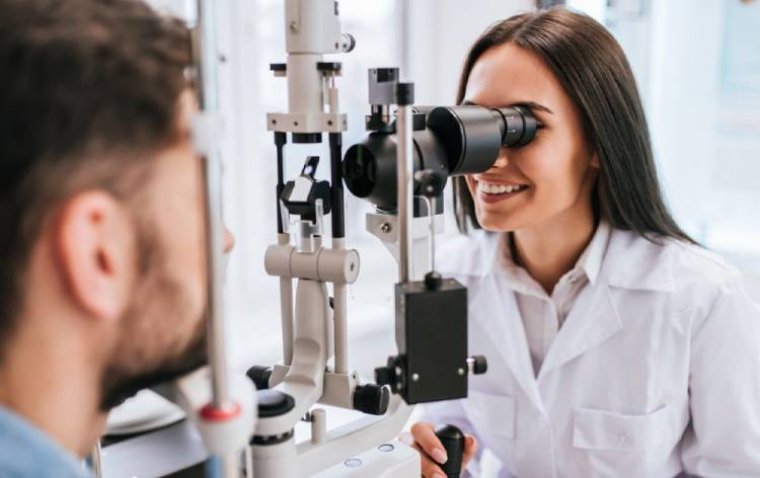
Novel Resin Technology Could Improve 3D Printing of Intraocular Devices
Researchers at the University of East Anglia (UEA) have developed a novel resin suitable for 3D printing intraocular devices. This pioneering innovation holds the potential to revolutionize the production of eye implants, which are crucial for cataract and refractive surgeries, by enhancing their customization and precision.
Understanding IOLs
An artificial intraocular lens (IOL) is typically required for individuals suffering from cataracts, a condition characterized by the clouding of the eye's natural lens, which impairs vision. IOLs are also utilized to correct various refractive errors, such as myopia (nearsightedness), hyperopia (farsightedness), and presbyopia (the age-related loss of near vision).
Dr. Aram Saeed, the lead author and Associate Professor in Healthcare Technologies at UEA's School of Pharmacy, emphasized the significance of this development: "For the first time, we have developed a resin that can be used to print ocular devices directly. While still in the early stages, the ability to 3D print these lenses could significantly enhance eye care for patients by offering unprecedented levels of customization and design precision, potentially leading to better clinical outcomes."
Historical Context of IOL Manufacturing
The study, titled "Stereolithographic Rapid Prototyping of Clear, Foldable, Non-refractive Intraocular Lens Designs: A Proof-of-Concept Study," has been published in the journal Current Eye Research. Historically, IOLs have been fabricated from a variety of materials, including glass and silicone, with recent advancements favoring acrylic materials due to their superior optical clarity, flexibility, biocompatibility, and stability within the eye.
Current manufacturing techniques for IOLs involve lathing and molding, which, while effective in producing high-quality devices, have inherent limitations in terms of design complexity and customization. Dr. Saeed noted, "3D printing could significantly enhance the production of ocular devices, not only improving speed and precision in manufacturing but also enabling greater complexity and customization in design."
Innovative Approaches in 3D Printing
The proof-of-concept study is the first in a series of planned publications detailing the team's advancements. Dr. Saeed continued, "Our work combines material science with healthcare technology and requires extensive know-how in developing these types of ocular devices. As we continue to publish our findings and share our advancements, we aim to be at the forefront of the industry, working with industrial partners and researchers worldwide to refine and enhance the technology."
Although the innovation is still in its early stages, it presents several potential advantages:
● Tailored lenses: 3D printing could create lenses customized to each patient's eye shape and vision needs, potentially improving vision correction and comfort.
● Faster production: Compared to traditional methods, 3D printing has the potential to enable quicker design, testing, and manufacturing of lenses. This speed could reduce the time between diagnosis and surgery, providing faster care to patients.
● Complex designs: 3D printing makes it possible to create intricate lens shapes that were previously difficult to manufacture. These designs could better address a wider range of vision problems.
● Cost reduction: By using 3D printing, the production cost of custom or high-quality lenses may decrease, making them more affordable for more patients, particularly in economically disadvantaged regions. This could lead to better overall public health outcomes.
● Compatibility with imaging: The researchers hope that combining 3D printing with advanced imaging technologies in the future could help produce lenses that fit individual patients' eyes optimally, reducing the need for adjustments or complications after surgery.
● Material innovation: 3D printing allows for the development of new materials with improved optical performance. This could result in lenses that not only correct vision but also enhance it.
Proof-of-Concept Findings
The study found that the 3D printed lenses exhibit good optical clarity, can be folded, and can be implanted into a human capsular bag. Co-author Michael Wormstone, Emeritus Professor at UEA's School of Biological Sciences, stated, "If successful in further developments, this new technology could transform the industry by enabling portable manufacturing solutions, especially beneficial in remote and economically disadvantaged areas. It also has the potential to support the production of premium, customized lenses that could enhance surgical outcomes in more advanced healthcare settings."
The research team's efforts have been recognized with the awarding of a United States patent, assigned to UEA Enterprise Limited, a business entity of the university focused on fostering innovation and commercializing research. UEA researchers continue to collaborate closely with industry partners to refine the technology. Further work is underway to ensure the process's accuracy on a larger scale and to increase the printing resolution for better dimensional accuracy.
Clinical trials are anticipated to begin in the next few years, with Dr. Saeed and Professor Wormstone maintaining a strong partnership with the ophthalmology department at Norwich and Norfolk University Hospital (NNUH). This collaboration brings valuable clinical insights and visionary approaches to their work, with both UEA and the hospital being members of the pioneering Norwich Research Park.
Mr. Anas Injarie, a leading consultant ophthalmologist at NNUH with over 20 years of experience, expressed optimism about the innovation: "This innovation has the potential to enable the production of lenses that match patient specifications in design and optical performance. For premium markets, it represents an exciting possibility to provide tailored treatments that could enhance patient satisfaction and surgical success."
Reference
Stereolithographic Rapid Prototyping of Clear, Foldable, Non-refractive Intraocular Lens Designs: A Proof-of-Concept Study, Current Eye Research (2024). DOI: 10.1080/02713683.2024.2344164
(1).jpg)










